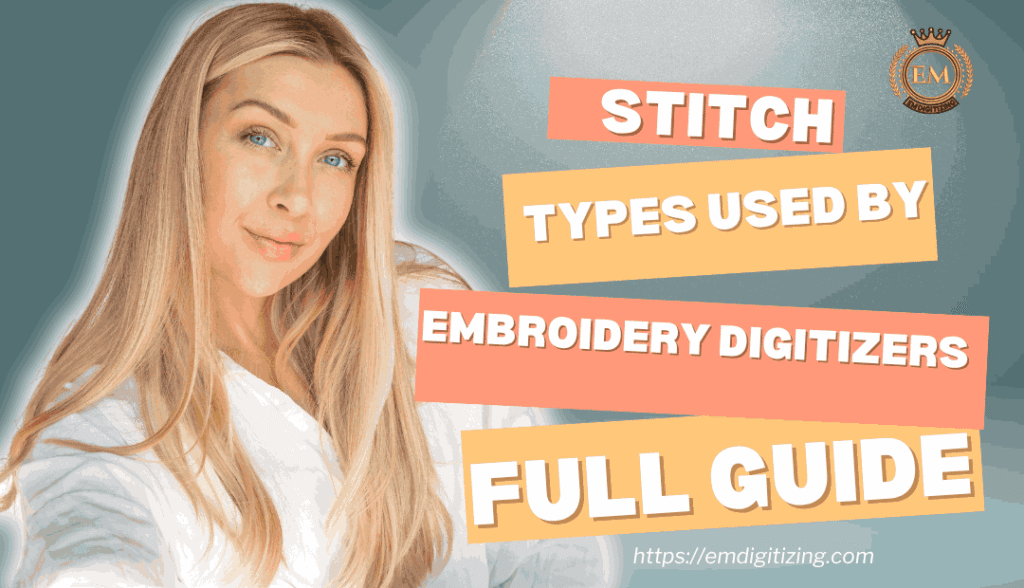
Stitch Types Used by Embroidery Digitizers Full Guide
Embroidery digitizing is more than just converting designs into stitches it’s an art that relies on choosing the right stitch types for different elements. To create high-quality embroidery, it’s crucial to understand the stitch types used by embroidery digitizers and how they affect the final output.
1. Satin Stitch
The satin stitch is ideal for borders, lettering, and small details. Embroidery digitizers often use this for its clean, shiny finish that stands out on garments.
2. Fill Stitch (Tatami Stitch)
Fill stitches cover larger areas with solid blocks of thread. This stitch type gives texture and durability to the design, making it a favorite for logos and backgrounds.
3. Running Stitch
Used for outlines, fine details, and underlay, the running stitch is lightweight and helps support other stitch types in complex designs.
4. Zigzag Stitch
A variation of the satin stitch, zigzag stitches are used for thicker outlines and areas that need flexible coverage with less density.
5. Bean Stitch
Known for its durability, bean stitches are used in areas needing reinforcement, especially in garments exposed to frequent wear and wash.
Why Stitch Type Matters
Choosing the right stitch type impacts not only the appearance but also the stitch count, thread usage, and wear resistance of the embroidery. That’s why professional embroidery digitizers carefully analyze each design element.
Final Thoughts
By understanding the stitch types used by embroidery digitizers, you can better appreciate the work behind every embroidered piece. Whether you’re a business owner or a hobbyist, knowing these basics helps you make better decisions when ordering digitizing services.
FAQs: Understanding Stitch Types Used by Embroidery Digitizers
Q1. What are the main stitch types used by embroidery digitizers?
The main stitch types include satin stitch, fill (tatami) stitch, running stitch, bean stitch, and zigzag stitch. Each serves a different purpose in enhancing the quality and durability of the embroidery.
Q2. Why is it important to choose the right stitch type in embroidery digitizing?
The right stitch type ensures proper coverage, texture, appearance, and stability. It also affects thread consumption and production time, making it a critical decision for embroidery digitizers.
Q3. Can I request specific stitch types when ordering embroidery digitizing?
Yes, if you have preferences, you can discuss them with your digitizing provider. However, experienced embroidery digitizers usually select the best stitch types based on your artwork and fabric type.
Q4. Which stitch type is best for small text in embroidery?
Satin stitch is typically best for small to medium-sized text because it provides a clean and polished finish.
Q5. How do embroidery digitizers determine which stitch type to use?
Digitizers analyze the size, shape, fabric, and function of each design element. Based on this, they choose stitch types that deliver the best visual and functional outcome.
